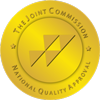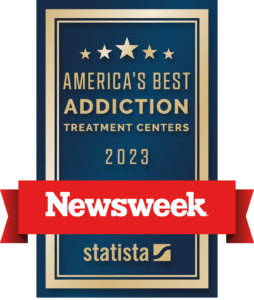There are very few reasons why people take stimulants and depressants together. For instance, on rare occasions, doctors recommend mixing the drugs. However, the main reason is for recreational purposes.
Stimulants and depressants are two different drugs. Stimulants increase energy and mental awareness. But, depressants slow down physical and mental functions. They also produce relaxing and sedative effects. For this reason, when people combine stimulants and depressants, the body receives mixed messages.
What are the Potential Consequences of Mixing Stimulants and Depressants?
There are many different stimulants and depressants. They also have different results when taken together. So when someone asks, “What are the potential consequences of mixing stimulants and depressants?” there are multiple answers.
Mixing drugs like stimulants and depressants is also known as polydrug use. Typically in polydrug use, the user has one drug of choice. However, they use other drugs to amplify the effects or to counteract them.
However, polydrug use of stimulants and depressants is extremely dangerous, and reactions are often unpredictable. To make it worse, many people who mix narcotics also use illicit substances. These substances include cocaine, heroin, and marijuana. They are very powerful and possibly fatal drug combinations.
The polydrug use of stimulants and depressants puts the body under undue stress. The cardiovascular, respiratory, and central nervous system (CNS) receives mixed messages to speed up and slow down.
So, what are the potential consequences of mixing stimulants and depressants? Well, they include:
- Slowed, depressed, or stop breathing
- Cardiac arrest, heart attack, or heart failure
- Coma
- Overdose
- Death
And 10 Other Questions Related to Mixing Substances
Many people use depressants to “come down” from a stimulant high and vice versa. People may also be seeking a certain high. For instance, the polydrug use of heroin and cocaine (speedball) produces an intense and long-lasting high. However, these and other drugs are fatal drug combinations.
But, fatal drug combinations can happen by accident. Subsequently, those taking medication for pain, depression, or anxiety need to be careful. For example, many people like to have a drink or two after a long day. But, if they also take benzos for anxiety, it can increase the effects of benzos.
Polydrug use minimizes the side effects of either drug. This use creates the feeling of not being as intoxicated as they are. Stimulants motivate the user to continue partying. They also hide the fact that the CNS system is slowing down. At the same time, depressants might hide a dangerously high heart rate.
For example, if a stimulant is taken with alcohol, it can lead the user to drink more. The body’s response to alcohol is to induce unconsciousness, but stimulants stop that from happening. Therefore, a person can drink more before passing out. If other depressants are taken, it can lead to coma or death.
Is Alcohol a Stimulant?
Everyone knows that alcohol changes brain functions. But is alcohol a stimulant? Or is it a depressant?
Many people think alcohol is a stimulant that increases heart rate and gives them energy. Alcohol also lowers inhibitions. However, alcohol isn’t just a stimulant.
Although alcohol has some stimulant effects, it is primarily a depressant. This effect means it slows the body down. But how it affects a person depends on how much a person consumes, their tolerance, and polydrug use.
Stimulant Effects of Alcohol
Initially, consuming alcohol causes the brain to release dopamine. It is the chemical that causes feelings of stimulation and energy. Alcohol also increases heart rate and can lead to aggression. These are typical symptoms of stimulants.
Stimulant effects of alcohol typically occur when BAC is around 0.05. However, depressant effects kick-in around 0.08 BAC. At this level, a person is considered legally impaired.
Depressant Effects of Alcohol
After the stimulant effects, alcohol slows down the CNS. This slowdown causes a decrease in blood pressure, heart rate, and mental clarity. Additionally, large amounts of alcohol slow reaction time and cause sleepiness and disorientation.
The depressant effects of alcohol occur when BAC levels reach 0.08. However, if a person continues to drink, it is extremely dangerous. The depressant effects of alcohol can lead to coma and even death.
Is Marijuana a Stimulant or Depressant?
Marijuana is complex and affects users in various ways. At times, marijuana acts as a stimulant and a depressant. The reaction depends on the strain and the chemical reaction with the body.
Marijuana typically affects attention span, long-term memory, and psychomotor skills. However, long-term use may lead to psychotic episodes. It can also cause brain damage and mental functioning.
Marijuana is a Stimulant
A strain of marijuana called “Sativa” has stimulant properties. It can raise moods, heighten creativity, and increase energy. However, it can also have the harmful effects of stimulants. For some people, marijuana may cause anxiety and paranoia. But, in severe cases, it can lead to panic and fear.
Marijuana is a Depressant
A strain of marijuana known as “Indica,” has depressant effects. It produces a calm, relaxing effect that can ease anxiety. It can also treat insomnia and help people sleep all night. However, the adverse effects can be similar to depressants. These effects include a decrease in energy and short-term memory loss.
What Substances are Commonly Used WIth Marijuana?
Because many states have legalized medical or recreational marijuana, many people forget it has risks when mixed with other drugs. For the most part, marijuana is safe compared to other drugs. But, when mixed with alcohol, antidepressants, or benzodiazepines, it can be dangerous.
Marijuana and Alcohol
Oftentimes, people like to have a drink after consuming marijuana. But, this comes with significant risks. For starters, combining marijuana and alcohol intensifies the feelings of both. This increase in effects can lead to:
- Weed-induced panic attacks
- Extreme paranoia
- Hallucinations
- Short-term memory loss
- Disconnect from reality
- Blurred vision
- Nausea
- Loss of motor skills
Marijuana and Antidepressants
Most drugs don’t mix well with antidepressants. This includes marijuana. However, many people on antidepressants also consume marijuana. But, many mental health disorders are intensified by polydrug use of marijuana and antidepressants.
For example, someone with Generalized Anxiety Disorder who consumes marijuana may experience higher anxiety. Additionally, marijuana can counteract the medication and increase anxious thoughts and feelings.
Marijuana and Depressants
Many people mix marijuana and depressant drugs like benzodiazepines because it intensifies the high. But, this can cause the heart rate to drop very low. It also slows a person’s thinking, speaking, and reaction time. Above all, marijuana and depressants’ polydrug use can lead to serious health issues and fatal drug combinations.
What are the Polydrug Use Risks of Heroin and Cocaine?
The polydrug use of heroin and cocaine is called “speedballing.” Many people like the effects of both highs and the different feelings it provides. People also take heroin to counteract the effects of cocaine. While this may work, they are fatal drug combinations. Additionally, large doses of heroin can also lead to respiratory failure when the cocaine wears off.
What Happens When Cocaine and Ecstasy are Taken Together?
Because cocaine and ecstasy are both stimulants, when taken together, it increases the user’s rush. Furthermore, it increases heart rates and the risk of heart attack or stroke. However, mixing any two stimulants can have these effects.
What are the Dangers of Mixing Alcohol and Hydrocodone?
Alcohol dangerously intensifies the effects of hydrocodone. However, these are possibly fatal drug combinations. But, mixing alcohol and hydrocodone can lead to:
- Nausea and vomiting
- Dehydration
- Blood pressure changes
- Depressed breathing
- Irregular heart rate
- Dizziness
- Lowered inhibitions
- Loss of consciousness
- Respiratory arrest
- Coma
Is it Safe to Use Cocaine and Drink Alcohol?
People who struggle with cocaine addiction often drink alcohol to reduce the adverse side effects of cocaine. Although the polydrug use of cocaine and alcohol usually occurs in social situations. Sometimes, a person may consume cocaine to wake them up after drinking too much. Whatever the reason, these drugs can be fatal drug combinations.
The most severe risk of mixing cocaine and alcohol is the production of cocaethylene. The liver produces this chemical when it metabolizes both cocaine and alcohol together. When this chemical builds up, it increases the euphoric effects of the drugs. But, it also increases blood pressure, aggression, and violent thoughts. In increase in cocaethylene is toxic and can lead to sudden death.
Can I Take Xanax to Counteract the Effects of Cocaine?
Xanax and cocaine are both dangerous drugs on their own. But, when taken together, they limit the power of the other. This reaction causes people to take more of one or both drugs.
The polydrug use of Xanax and cocaine increase the feelings of sadness and irritability. As a result, people are at a higher risk of suicide. Overdose is another severe risk of polydrug use.
When people combine these drugs, they don’t notice when the cocaine has their heart racing. They don’t notice because the Xanax has them feeling relaxed. On the other hand, they may not notice their body slowing down from the Xanax. However, they don’t realize it because cocaine has them feeling alert and energetic.
Are Meth and Heroin Fatal Drug Combinations?
Yes, meth and heroin can be fatal drug combinations. For example, heroin slows down breathing, but meth increases it. As a result, people feel like they are breathing normally. This rollercoaster can lead to a heroin overdose and even death.
But, the reverse can also happen. The effects of meth typically last longer than heroin. As a result, when meth wears off, the effects of cocaine spike. This spike dramatically increases the heart rate. For this reason, meth and heroin combinations lead to sudden death, arrhythmias, and heart attack.
What Happens if I Drink While Taking Oxycodone?
Because alcohol and oxycodone both are central nervous system depressants, they can be fatal drug combinations. The respiratory system becomes overwhelmed and can lead to respiratory depression. Respiratory depression is when a person is not breathing or barely breathing. As a result, respiratory depression causes brain damage and even death.
Treating Polydrug Use at Sana Lake Recovery Center
After learning, “what are the potential consequences of mixing stimulants and depressants?” the need for alcohol and drug rehab in Kansas City is more obvious. If you or a loved one struggles with substance use disorder, we can help. Contact us today and find out how.
References:
https://www.ncbi.nlm.nih.gov/pmc/articles/PMC1243898/
https://www.healthline.com/nutrition/is-alcohol-a-stimulant#bottom-line
https://pubmed.ncbi.nlm.nih.gov/21560041/



